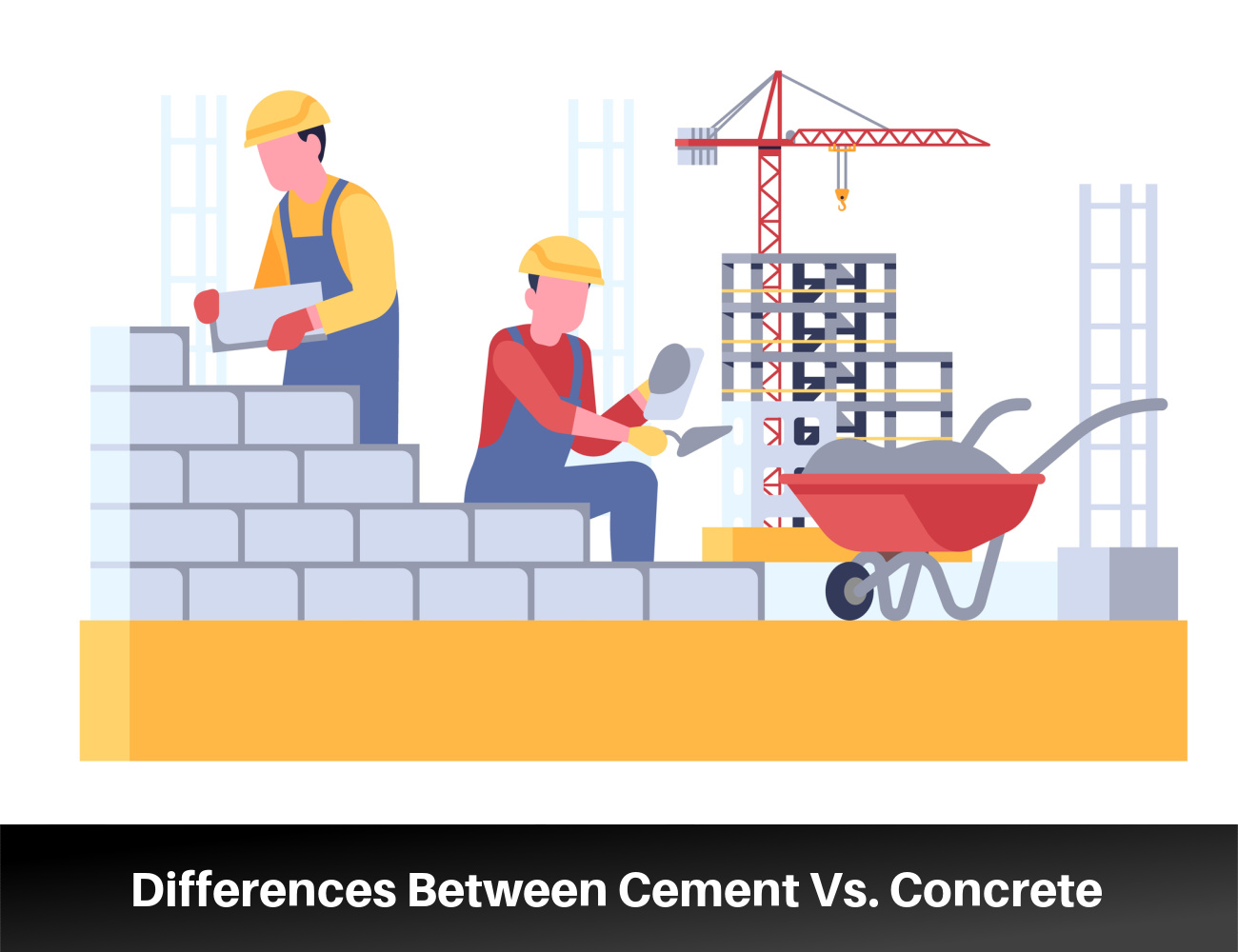Cement Vs. Concrete: Explaining the Difference
Cement vs concrete are often used interchangeably, but these materials, though similar, are not the same. Both cement and concrete play a crucial role in construction, but they differ in composition, function, and applications.
Knowing the difference between cement and concrete will allow you to use precise and accurate terminology, select materials that will work for your particular project, and allow you to plan your project accurately.
Differences Between Cement vs Concrete
Cement and concrete are similar substances, but their differences create their unique nature and their suitability for diverse projects.
Composition
Cement is a binder that acts to connect other materials together and concrete is an aggregate mixture. Cement is composed of clinker, gypsum, and other additives that are ground to create a fine powder substance.
Concrete is a collection of distinct materials that are mixed together. Concrete contains cement, which acts as a binding agent, aggregate in the form of gravel or crushed stone, water, and additives.
Function
Cement is the primary ingredient in concrete. When it comes into contact with water, it undergoes a chemical reaction called hydration that begins the hardening process. It connects all of the other substances together as it hardens.
Concrete is the final product that cement creates. Builders and engineers use concrete products in bridges, dams, buildings, and foundations.
Strength
On its own, cement is not extremely strong, but it does provide bonding strength in concrete mixes. The strength of concrete depends on the mix of cement, aggregates, water, and additives. By adjusting these ratios, construction professionals can alter the strength of the concrete mixture for diverse projects.
Applications
Cement has limited direct application; builders use it primarily as the main ingredient in concrete. Because of its strength, versatility, and durability, concrete is one of the most common materials in the building industry. Builders use concrete in building projects of all kinds. Artists also use concrete to help them create indoor and outdoor sculpture and other visual art.
Durability
Cement is not very durable on its own as it can erode and be susceptible to cracks over time. As an additive in concrete, cement helps create the durability and longevity of the material. Concrete that has been properly mixed, poured, and cured is highly durable, resistant to weathering, and usable for years to come.
Appearance
Cement is a gray or white powder substance that forms a paste when mixed with water. Depending on the aggregates, concrete has a wide range of colors and textures. Manufacturers can pigment or stain concrete to achieve different aesthetic results.
Cost
In general, cement is less expensive than concrete because it is just one substance, though specialized cement types can be more expensive than standard cement. The cost of concrete includes the cost of cement, aggregates, and additives. The specific type of cement, aggregate materials, and additives will affect the overall cost of concrete.
Environmental Impact
The production of cement has high environmental costs we associate with it, including the emission of CO2 and the intense energy used during the production of clinker.
The environmental cost of concrete does include the costs of producing cement, but on its own, it is not as environmentally impactful. Many types of concrete incorporate recycled materials like fly ash and slag which reduce the consumption of new materials. The longevity of concrete means that it will require fewer repairs and replacements over time.

